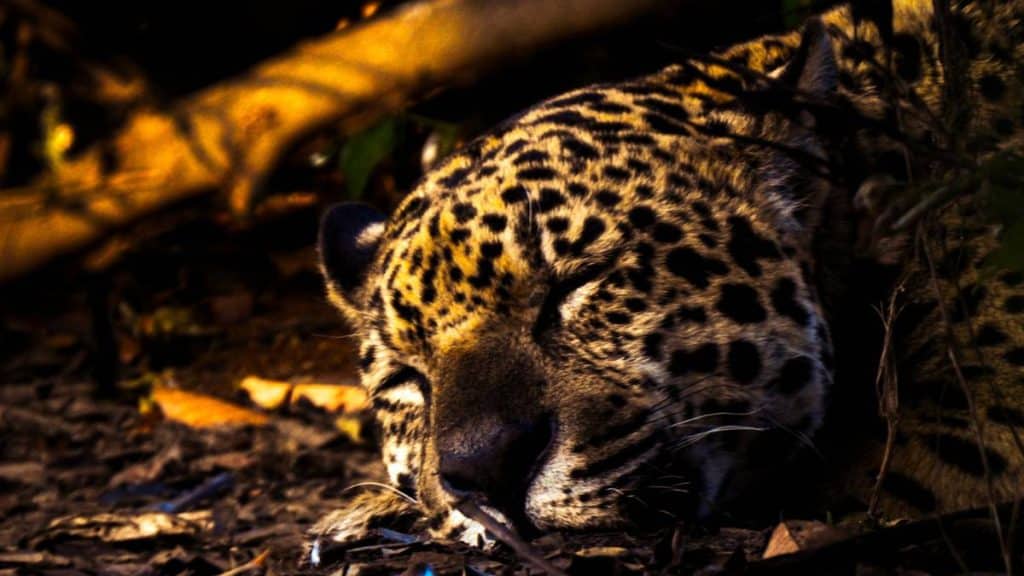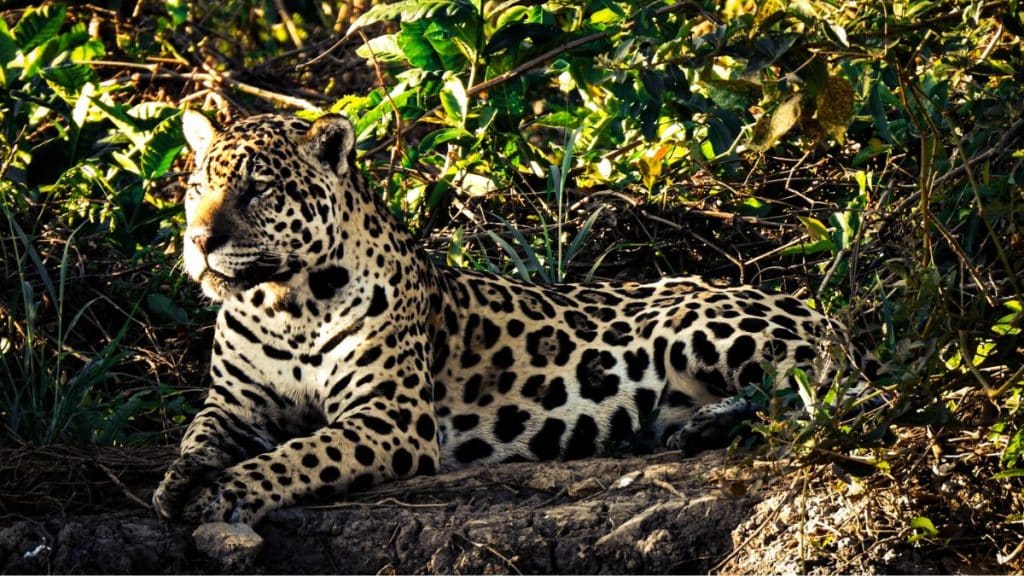We all know that the magnificent Jaguar, apex predator of the Pantanal, is the top cat, the king of South American animals. His star power is absolute. However, he does share the stage with a supporting cast of fascinating creatures that call the Pantanal home. Let’s have a look at some of the other mammals that live in the Jaguar’s territory.
Other felines of the Pantanal include the Puma, who nearly rivals the Jaguar in size and power. This long-bodied brown cat ranges throughout the Americas under many names, such as Mountain Lion and Cougar. Extraordinarily athletic, the Puma can leap 18 feet vertically and 40 feet horizontally, while reaching speeds of 50 mph when sprinting after prey. Another local cat, the Ocelot, though much smaller than the Jaguar at about 30 pounds, sports a similarly beautiful coat marked with stripes as well as spots. It’s a solitary, nocturnal hunter who prefers to live in dense vegetation near water, where it can use its prodigious gifts for climbing and swimming to capture its prey. Small mammals are its usual menu, although it also eats fish, reptiles, and birds. Ocelots are regularly seen at SouthWild’s Pantanal Lodge. Smaller cats in the neighborhood include the Jaguarundi, a daytime hunter about twice the size of a housecat, the elusive nocturnal Pantanal Cat, and the very small, spotted Oncilla.
Another interesting local group are the giants — three unrelated species so large that “giant” is part of their names. The Giant River Otter is about seven feet long with a velvety, dense coat of rich brown that has long made it a target for poaching. These sociable animals live by the water in extended family groups that cooperate in defense, hunting, and raising their young, all the while conversing in barks, snorts, growls, whistles, hums, and coos. They are the noisiest of the otters and have all the playful charm of their smaller cousins. Now, through hunting and habitat loss, they are highly endangered. Ironically, intense conservation efforts by their only predator – man – are probably their last hope for survival as a species.
The Giant Armadillo earns its name with an average weight of 50 pounds and length of about 50 inches. It is impressively armed, with a series of hinged body plates, as many as 100 teeth (the most of any land mammal), and an eight-inch, sickle-shaped claw on each forepaw. Yet, this big animal subsists almost entirely on tiny insects and can polish off all the inhabitants of an entire termite mound at one sitting. They are solitary, nocturnal animals who spend the days sleeping in large burrows they dig themselves.
Surely the strangest looking of all the Pantanal’s animals is the Giant Anteater. Males can grow to seven feet in length and weigh in at 100 lbs., giants indeed among their kind. On one end of the creature is its long tail, bristling with a thick curtain of hair. On the other end, its long narrow head is mostly snout. No wonder its sense of smell is 40 times sharper than ours. It is completely toothless and can open its small mouth just enough to allow its slender, sticky tongue to extend 18 inches from its head. When it sniffs out an ant nest, it tears open a hole and thrusts that tongue in and out at an astonishing 160 times per minute. The Giant Anteater might visit as many as 200 nests a day and eat 35,000 ants.
While it isn’t called a giant, the Brazilian Tapir is a formidable animal, about eight feet long and weighing 500 pounds. Adult tapirs are dark brown but their calves sport gaudy white stripes and spots. Excellent swimmers and divers, tapirs spend most of their days in the water and sleep on the riverbanks. They are herbivores, using their prehensile proboscises to snag leaves, buds, and shoots from trees and bushes. Although the species is widely distributed across much of South America, its numbers are dwindling due to habitat loss and poaching for meat and hides. It is considered endangered.
The Pantanal hosts a number of primates, but here we’ll look at two that we see every day: the Hooded Capuchin Monkey and the Black Howler Monkey. The Black Howlers are well named. The males’ vocalizations can be heard up to two kilometers away, usually at dawn. The largest of the New World monkeys, they are arboreal, creatures of the treetops that spend little time on the ground. They live in groups of as many as 18 individuals, both male and female. The adult males are indeed black, but the females and babies are blonde. The Black Howler diet consists mostly of leaves. Their Hooded Capuchin neighbors eat a much more varied diet of fruit, insects, and seeds. Documented tool-users, they pound stone “hammers” against tree branch “anvils” to crack open hard-shelled seeds. They spend their days travelling through their territory as a group. In the wild, Hooded Capuchins can live for 30 years.
About Capybara
The Capybara, often seen grazing around the SouthWild Pantanal Lodge, are the world’s largest rodents, very similar in everything but size to the Guinea Pig. Sociable creatures, they live in herds of varying numbers from Texas to Argentina. As with all rodents, their incisors grow throughout their lives, kept at the correct length only by regular gnawing. Capybara like to live near water and are excellent swimmers, helped by their webbed toes. They can stay underwater for five minutes at a time, one of their favorite ways to escape their main predator, the Jaguar. Baby Capybara often ride on their mothers’ backs and will nurse from any cooperative female in the herd. Both males and females bark to attract mates.
All these marvelous animals call the Pantanal home and here is your invitation to visit them. Come to see the mighty Jaguars but meet the other mammals that live alongside them, too. Our expert SouthWild guides will make sure you don’t miss a bit of the vibrant wildlife that makes the Pantanal so special. Go to jaguar.southwild.com and get a glimpse of what we would like to show you in person. The Pantanal and its creatures have a magic all their own. Come share it!



